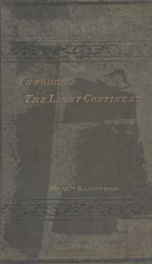papers on hortcultural and kindred subjects

Purchase of this book includes free trial access to www.million-books.com where you can read more than a million books for free. This is an OCR edition with typos. Excerpt from book: KEEPING HEDGES. One of the principal objections urged against the employment of live fences or Ledges is the cost of keeping them in efficient repair, for it admits of no qualification that unless they receive proper attention they will prove to be of but little value as a fence against live stock. Unfortunately, our best hedge plants so far are of strong growth, especially when young, and consequently require to be trimmed two or three times during the summer, at least for several years after planting, and this at a time when farm crops demand attention, so that in a vast number of cases the hedge is neglected and soon ceases to be serviceable. The best hedge plant is one that could be kept by winter trimming only, because in that season of comparative leisure it would probably receive attention, but with such strong growing plants as the osage orange aud honey locust, our two popular hedge plants, it is impracticable to produce a close fence without frequent summer trimmings. There is one thing, however, which should be put to their credit, that after a few years the growth will be less profuse; the weakening effect of continued summer pruning ultimately weakens the plants, so that they become easier managed. This also prevents them from sending out their roots to a great distance, so that they do not interfere with cultivated crops, an evil which soon becomes visible when a hedge is neglected and allowed to take care of itself. When a hedge gets into a condition that one summer trimming and one winter trimming will keep it in fairly good condition, the labor and cost is reduced to a minimum. It will also have a tendency to retard the exuberance of early summer growth, if the winter trimming is delayed until after the buds begin to push in spring. This will make a differen...
Users who have this book
Users who want this book
What readers are saying
What do you think? Write your own comment on this book!
write a commentif you like papers on hortcultural and kindred subjects try:
Do you want to read a book that interests you? It’s EASY!
Create an account and send a request for reading to other users on the Webpage of the book!






